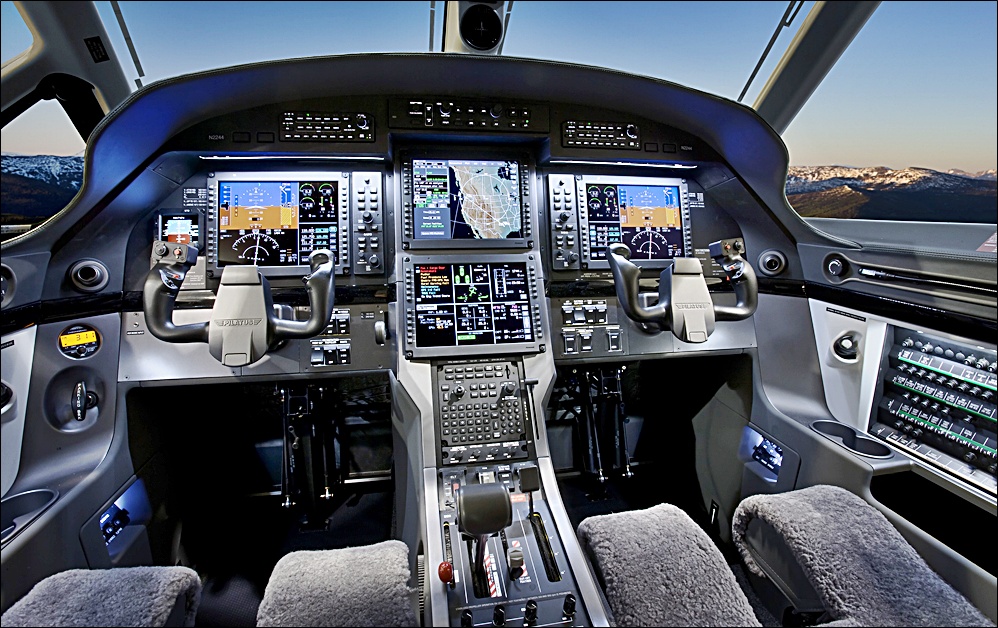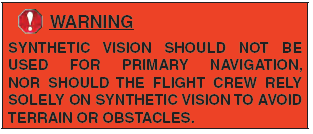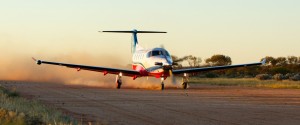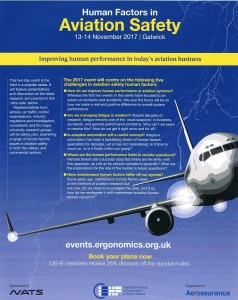Confusion of Compelling, But Erroneous, PC-12 Synthetic Vision Display
Synthetic Vision Systems (SVS) are an increasingly common tool to enhance flight crew situational awareness. The crew of an Australian Pilatus PC-12/47E (PC-12NG) however were momentarily misled during a night-time medevac take-off by their Honeywell SVS on 18 June 2016.
The PC-12 Synthetic Vision System
The Honeywell Primus Apex SmartView SVS display is shown below.

Honeywell Primus Apex SmartView Synthetic Vision System (SVS) Display as fitted to the Pilatus PC-12 (Credit: Honeywell via ATSB)
It depicts a ‘3-D’ style-view of surrounding terrain, obstacles and runways, overlayed with attitude, altitude and airspeed data.
The SVS is not to be used for ‘primary input or navigation’, and a warning can be found in the Honeywell avionics system Pilot’s Guide.
The Incident Flight
The Australian Transport Safety Bureau (ATSB) report that 18 seconds after take-off, as PC-12/47 VH-OWA of the Royal Flying Doctor Service (RFDS):
…climbed through about 250 ft above ground level, the pilots observed the radio altimeter (radalt) wind down to zero. The radalt low altitude awareness display rose to meet the altitude readout.
The synthetic vision image on both pilots’ primary flight displays (PFDs) then showed the runway move rapidly left and off the screen, and the ground representation on the PFD appeared to rise rapidly up to meet the zero pitch reference line.
The pilot flying reported that the synthetic vision image created the impression that the aircraft was sinking rapidly towards the ground, and they responded by instinctively pulling back on the control column. The flight path indicator moved up to about 15°. No warnings or cautions were displayed and the crew did not receive any oral alerts from the Terrain Awareness and Warning System (TAWS).
The check pilot [the pilot monitoring] immediately looked outside and was able to discern a visible horizon due to the moonlight. The check pilot cautioned the pilot flying that the aircraft had a nose-high attitude, which prompted the pilot flying to switch their focus to the electronic standby instrument system [EFIS – which the check pilot could not readily see as it was to the left side of the left hand seat, occupied by the pilot flying] and closely monitor the attitude and the airspeed tape.
The pilot flying lowered the aircraft nose to regain an 8° pitch attitude and the airspeed, which had reduced to 101 kt, increased back to the target airspeed of 110 kt. The aircraft had continued to climb throughout the event and passing 850 ft all indications returned to normal. The aircraft subsequently landed…without further incident.
The Technical Investigation
Both radalt antennas (one for transmit and one for receive) had failed which would have resulted in the radalt reading dropping. As radalt data is used in conjunction with the runway (and obstacle) database information to provide the SVS display, the runway therefore appeared “to rise up towards the aircraft reference symbol on the PFD”.
The movement of the runway to the left of the screen was probably associated with a small displacement of the aircraft to the right of the runway centreline. The wind at the time was from 094° at 9–11 kt, therefore largely a headwind component and the lateral displacement of the aircraft was unlikely to be a result of the wind.
As the radalt senses that the aircraft is nearing the ground, smaller lateral deviations from the runway centreline generate significant movement of the synthetic vision runway image.
An investigation by the synthetic vision system manufacturer, Honeywell, found that the radio altimeter sent incorrect radio altitude data to the synthetic vision system while still indicating that the data was valid. Therefore, the synthetic vision display system continued to display the terrain information using incorrect data.
Operational Aspects
The ATSB say that:
The two pilots were highly experienced; the pilot flying had over 11,000 hours total aeronautical experience and over 2,600 on the aircraft type, and the check pilot had over 15,000 hours total experience and 3,000 hours on type.
Most of the pilots’ training is done on board the aircraft, as they do not have access to a Pilatus PC-12 simulator. Although some system failures can be simulated, it is not possible to generate a false display as occurred in this incident.
We note that this demonstrates the importance of regular simulator training when flying highly automated aircraft with complex displays.
Both pilots commented that they had previously experienced failure of primary flight instruments at low level and at night in different aircraft (without synthetic vision systems). They had been able to disregard the erroneous or failed instruments and reference the standby instruments to maintain control of the aircraft and situational awareness. However, the prominence of the synthetic vision display is such that it is difficult to ignore erroneous information and locate valid information.
The combination of the runway and the radalt speed tape moving up gave the very strong illusion that the aircraft was going to hit the ground. The pilot flying reported that they realised something was wrong but could not initially figure out what it was. The image of the ground rising up and the runway disappearing rapidly sideways took the focus of the pilot flying away from anything else.
The crew reported feeling some level of disorientation stress, or motion sickness, which is indicative of a disagreement between the senses.
Additionally:
Both pilots commented that the situation may have been more serious if operating single pilot or if they had already flown more sectors that night and been more tired.
Safety Actions
ATSB say RFDS has taken the following actions:
- Engineering replaced the RADALT aerials across the fleet [these are ‘on condition’ items normally].
- The minimum equipment list has been amended to include synthetic vision.
- Flight crew were alerted to the potential hazard of a synthetic vision failure during flight through a safety communication on 1 July 2016. The potential for confusion or spatial disorientation during an event, particularly at night or in low visibility environmental conditions was highlighted.
- The event has been discussed by the Training and Check Department. They are reviewing the possibilities of incorporating scenarios related to ambiguous/incorrect information from the primary flight display into check flights and have commenced trialling a scenario.
While Honeywell:
- Issued a Pilot Advisory Letter (PAL-APEX-01)…on 11 August 2016. The letter included a description of the event. The letter also advised pilots that the use of synthetic vision is for situational awareness and should not be utilised for the indication of attitude or altitude in lieu of the primary flight display indications for pitch, roll, yaw, or altitude. The letter advises pilots to follow the primary flight indications presented on the PFD at all times.
- Is investigating ways to make the SVS more robust against a similar failure. The focus of their investigation is to prevent the synthetic vision display from continuing to display the image when the data is incorrect but assessed as valid by the Radalt.
Our Observations on Design HF Implications
It is perhaps fortuitous in this case the aircraft was being operate multi crew by two experienced pilots on a night with some moonlight and a discernible horizon.
We note with that while SmartView is advertised as giving “unprecedented situational awareness”, delivered “in an easy-to-understand manner”, with a ” a natural and intuitive depiction of flight symbology and 3D terrain on the PFD”, “leveraging our experience in human factors and graphics design”, it is paradoxical that the Pilot’s Guide states:
ATSB research report ‘An overview of spatial disorientation as a factor in aviation accidents and incidents’ states:
…instrumentation should present a clear and intuitive sense of position, which the pilot under conditions of high stress and workload can instantly achieve an idea of what the aircraft is doing.
Failure of the aircraft instruments should hopefully never occur. However, in the event that it does, the pilot needs to receive clear and non-ambiguous indications of instrument failure. If a key instrument fails, such as the attitude indicator, the pilot needs to know that it has failed so they no longer depend on its information.
ATSB Safety Message
The image of terrain on the primary flight display is powerful and compelling. This incident highlights the manner in which an inaccurate synthetic vision image can rapidly lead to a degree of spatial disorientation.
Pilots need to ensure that they are familiar with the limitations of the synthetic vision system and how to effectively deal with erroneous information as well as system failure modes.
Organisations that operate aircraft fitted with similar technology should ensure that appropriate information and training is available to pilots, including when and how it should be used when it is not approved for primary navigation.
UPDATE 14 August 2017: Flight Safety Australia publishes Seeing Things on the same accident:
CASA human factors specialist, Reuben Delamore, says further instructions and admonishments aimed at pilots are at best only part of the solution. They do not address underlying issues of technology, psychology and design.
‘We’ve got all this fabulous technology on flight decks, but with hindsight, as an industry, we’re not necessarily considering what could happen if technology doesn’t behave as expected. All we have is a general principle—technologies that work in new ways fail in new ways,’ he says.
Delamore notes the cautionary placard on the aircraft’s panel saying this is at odds with the fact that vision is our primary sense:
‘When a visual representation is provided that appears accurate, of course we will attend to that information to the point where it will become relied upon, despite the designers’ placard.’
See also: Prinzel, L.J., and Kramer, L. J. (2009). Synthetic Vision Systems. NASA Langley Research Center
UPDATE 5 August 2018: Improvised Troubleshooting After Cascading A330 Avionics Problems
UPDATE 13 January 2019: Human Factors of the Selection of Parking Brake Instead of Speed Brake During a Hectic Approach (ERJ145 at Runway Excursion at Bristol)
UPDATE 12 December 2020: Pilatus PC-12 Pacific Ditching
UPDATE 26 June 2021: Pilatus PC-12 Collided with Pick-Up Truck During Dusk Take Off





Recent Comments